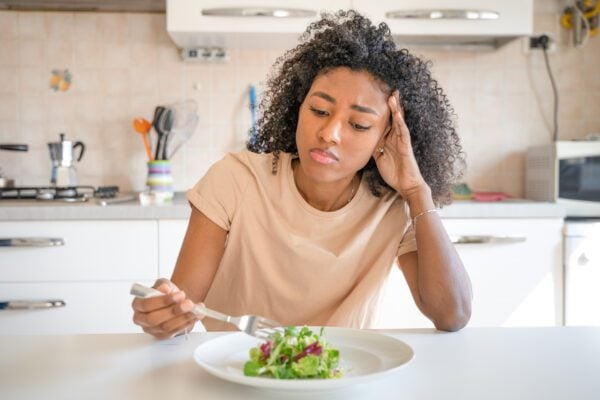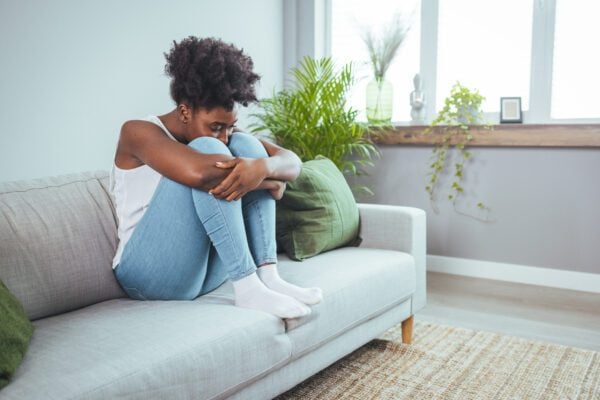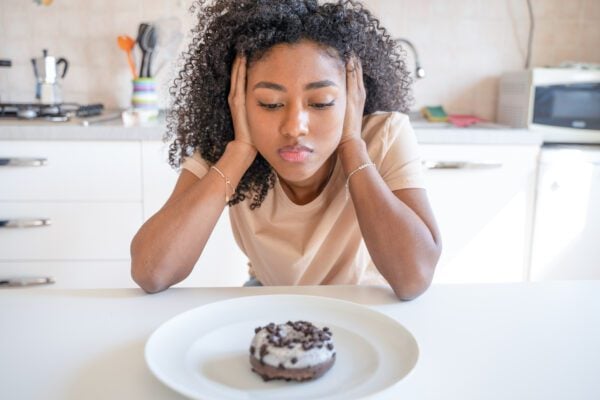In many Black households, food is more than nourishment — it’s celebration, comfort, tradition and survival.
But when emotional eating becomes a coping mechanism for trauma, stress or control, it can quietly evolve into something dangerous: an eating disorder.
“When people think about eating disorders in general, people automatically envision anorexia nervosa — a thin white girl’s illness, and that’s not true,” said Paula Edwards-Gayfield, regional assistant vice president for the Renfrew Center. “Unfortunately, then Black individuals, people of color, are oftentimes overlooked because providers are not thinking about any of the needs of a marginalized community.”
Despite widespread stereotypes that frame eating disorders as a white, affluent issue, research shows Black Americans experience disordered eating at similar rates. Yet they are significantly less likely to be diagnosed or treated. In communities where residents face food insecurity, limited access to culturally competent health care and generational racialized trauma, eating disorders can go unnoticed and untreated for years.

“I think eating disorders are a way to address unpleasant emotions and deep pain that people experience, especially, I think, within the Black community,” said Dr. Natalie Cumberlander Zolicoffer, a psychologist at Riley Children’s Charis Center for Eating Disorders. “I think within the Black community, it is combined with historical context, and that it’s not something that people have to feel a sense of shame about.”
How symptoms manifest
Eating disorders include anorexia nervosa, bulimia nervosa and binge eating disorder (BED). While anorexia and bulimia often grab headlines with their dramatic weight loss and purging behaviors, binge eating disorder is the most common form among Black adults and adolescents. National surveys show BED rates at around 1.66% in Black adults and about 5% in Black women, double the rate for non-Hispanic white women (2.5%).
“I do not think the symptoms of the eating disorder are manifested differently, but it’s more so the awareness of the prevalence of eating disorders in the Black community that’s different from the other groups,” Zolicoffer said.

Symptoms of BED may include:
- Frequent bingeing: Consuming large amounts of food while feeling out of control.
- Purging: Behaviors like vomiting, laxative use or excessive exercise.
- Emotional eating: Eating to soothe stress, trauma or anxiety.
- Body image distress: These can appear differently in Black communities, where cultural norms around fuller or curvy body shapes may clash with mainstream ideals.
For many Black patients, the disorder doesn’t trigger concern because larger bodies may be valued or celebrated, further delaying diagnosis.
Why it can affect the Black community differently
- Higher prevalence and later recognition:
National data confirm that Black Americans experience all eating disorders at similar or even higher rates than white Americans — but they’re half as likely to be diagnosed or treated.
- Cultural coping mechanisms:
Therapists affirm that emotional eating often masks pain from racial trauma, discrimination or food insecurity.
- Provider bias & incompatible screening tools:
Eating disorder tools like SCOFF were designed primarily for white thinness-centric norms, and they may not capture cultural nuances. Added to this, most eating disorder clinicians are white (73%).
- Body ideals & stigma:
While Black culture has uplifted curvier body types as a counter to thin ideal oppression, pervasive stigma around weight still exists. BMI-based assessments often misclassify and dismiss Black bodies.
“I think it maintains shame and stigma that’s connected to it. When youth of color are suffering, less than two thirds of them are likely to receive treatment for an eating disorder compared to white youth,” Edwards-Gayfield said.

Many Black women are less likely to be diagnosed, and even after starting treatment, and they’re more likely to leave early.
“You have food insecurity, socioeconomic factors, financial constraints, combined with historical context, that can make it more difficult in many different ways for people to seek out services or to feel like the services are there for them,” Zolicoffer said. “I think some of it can also be the lack of representation.”
In some underserved communities, where poverty, food insecurity and access disparities persist, these disorders flourish in silence. Roughly 60–66% of Black adults in national studies are overweight or obese, some of which reflects underlying BED.
Resources
- HealthNet Martindale-Brightwood Health Center (2855 N Keystone Ave)
Offers behavioral health services, nutrition education, lab work and sliding scale support including social work.
- Riley Children’s Charis Center for Eating Disorders (IU Health, 6640 Intech Blvd)
Comprehensive outpatient, intensive outpatient, partial hospitalization and inpatient services for all ages.
- The Refuge, A Healing Place (Indianapolis)
Focused programs for adults with anorexia, bulimia, binge-eating, body dysmorphia and orthorexia.
- Project HEAL (national nonprofit, accessible via phone or online)
Offers financial support, treatment referrals, insurance navigation and mentorship.
- National Association of Anorexia Nervosa & Associated Disorders (ANAD)
Free peer support groups, weekly virtual meetings and helplines.
- Edna Martin Christian Center’s MB7 Initiative (2605 E 25th St.)
A local hub for community empowerment, emergency food support, gardening and mental health outreach. Ideal spot to connect with peer networks and wellness events.

What you can do
- Trust your feelings: Patterns like eating until overfull, hiding food or strict dieting can be signs, even if your body doesn’t look sick.
- Ask, don’t wait: Speak with a doctor or counselor and specifically mention eating behaviors or anxiety around food.
- Seek culturally competent providers: Ask if they’re trained in BIPOC or trauma informed care.
- Join peer groups: They reduce isolation and build community.
- Support loved ones: When someone says, “I think I need help,” believe them and offer to accompany them to resources like HealthNet or Charis.
Recovering from an eating disorder isn’t just about food — it’s about reclaiming choice, respect and mental safety.
“I’ve treated people from many different racial and ethnic backgrounds, and people get better,” Zolicoffer said.
For more information about the Charis Center for Eating Disorders, visit rileychildrens.org. To learn more about The Renfrew Center, visit renfrewcenter.com.
This reporting is made possible by a grant from the Indianapolis African-American Quality of Life Initiative, empowering our community with essential health insights. https://iaaqli.org/
Contact Health & Environmental Reporter Hanna Rauworth at 317-762-7854 or follow her on Instagram at @hanna.rauworth.
Hanna Rauworth is the Health & Environmental Reporter for the Indianapolis Recorder Newspaper, where she covers topics at the intersection of public health, environmental issues, and community impact. With a commitment to storytelling that informs and empowers, she strives to highlight the challenges and solutions shaping the well-being of Indianapolis residents.





